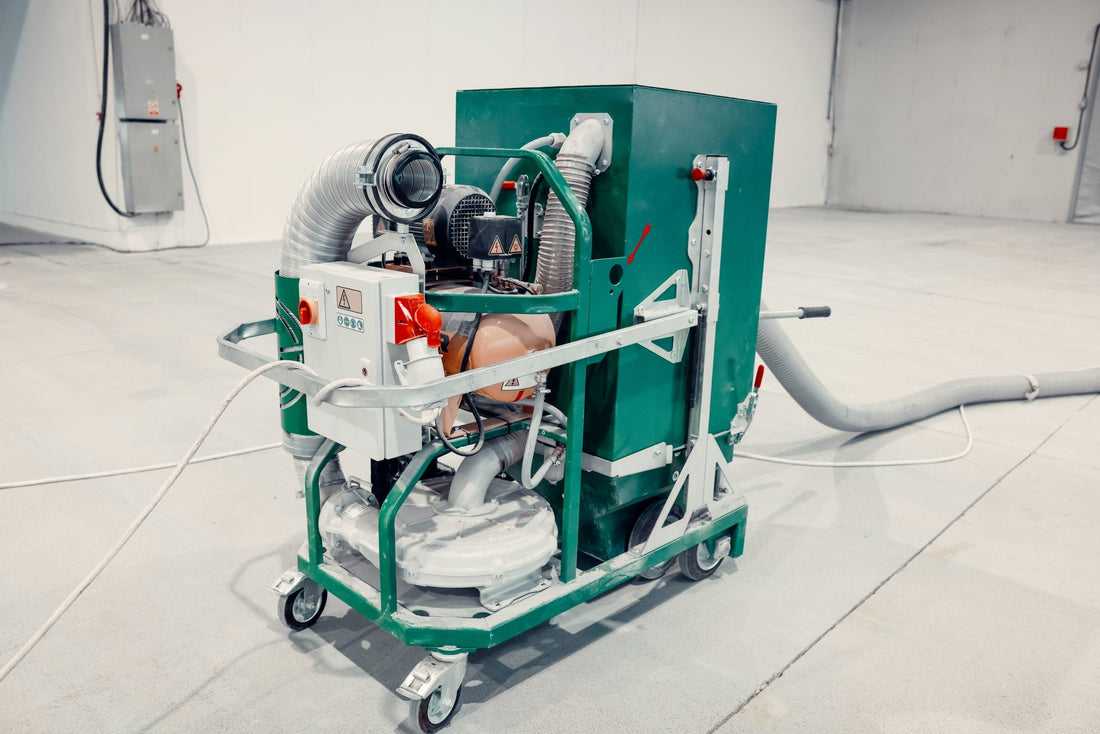Why Remote Control Grinders Outshine Walk-Behind Grinders

In the world of concrete grinding and surface preparation, the equipment you choose can significantly impact efficiency, safety, and overall results. Two popular types of grinders are remote control grinders and walk-behind grinders. While walk-behind grinders have long been a staple in the industry, remote control grinders are rapidly gaining traction due to their superior performance and numerous advantages. In this blog, we’ll delve into why remote control grinders are often considered a better choice compared to their walk-behind counterparts.

1. Enhanced Safety Features
Safety is paramount in any construction or renovation project, and remote control grinders offer a significant advantage in this area. With a remote control grinder, the operator can stay at a safe distance from the grinding area. This reduces the risk of accidents and exposure to potentially harmful dust and debris. Walk-behind grinders, on the other hand, require the operator to be in close proximity to the grinding surface, increasing the likelihood of accidents and health hazards.
2. Improved Precision and Control
Remote control grinders provide operators with a level of precision and control that is hard to achieve with walk-behind models. The remote control allows operators to maneuver the grinder with pinpoint accuracy, making it easier to handle complex grinding tasks and work around obstacles. This increased control translates to a more even and consistent grind, which is essential for achieving a high-quality finish on concrete surfaces.
3. Greater Efficiency and Productivity
Efficiency is a key factor in any grinding job, and remote control grinders excel in this regard. These machines are designed to cover more ground in less time compared to walk-behind grinders. The ability to control the grinder remotely means that operators can work more quickly and efficiently, reducing the overall time required for a project. Additionally, the advanced features of remote control grinders often include automatic functions and settings that streamline the grinding process, further boosting productivity.

4. Reduced Operator Fatigue
Grinding concrete can be physically demanding, and walk-behind grinders require operators to exert significant effort and stamina. Remote control grinders, on the other hand, minimize physical strain by allowing operators to control the machine from a comfortable distance. This not only reduces operator fatigue but also minimizes the risk of repetitive strain injuries. By alleviating physical demands, remote control grinders enable operators to maintain focus and perform at their best throughout the job.
5. Superior Maneuverability
One of the standout advantages of remote control grinders is their superior maneuverability. These machines are often equipped with advanced tracking systems and steering capabilities that make it easier to navigate tight spaces and complex layouts. Whether you’re working in a small room or around intricate obstacles, remote control grinders can handle challenging environments with ease. Walk-behind grinders, while effective, may struggle with maneuverability in confined or tricky areas.
6. Better for Large-Scale Projects
For large-scale grinding projects, remote control grinders are often the preferred choice. Their ability to cover extensive areas quickly and efficiently makes them ideal for commercial and industrial applications. Remote control grinders are designed to handle heavy-duty tasks and maintain consistent performance over long periods. This makes them particularly suitable for projects such as warehouse flooring, large retail spaces, and industrial facilities.
7. Cost-Effectiveness in the Long Run
While remote control grinders may have a higher upfront cost compared to walk-behind models, they often prove to be more cost-effective in the long run. Their efficiency, reduced operator fatigue, and enhanced safety features contribute to lower overall project costs. Additionally, the increased productivity and faster job completion times can lead to more projects and higher revenue for contractors. When considering the total cost of ownership, remote control grinders often offer a better return on investment.
8. Advanced Technology and Features
Remote control grinders come equipped with a range of advanced technologies and features that enhance their performance and versatility. These may include variable speed settings, automatic leveling systems, and advanced dust collection mechanisms. These features not only improve the quality of the grind but also contribute to a cleaner and more efficient working environment. Walk-behind grinders, while effective, may lack some of these advanced technological capabilities.

Conclusion
In the ongoing debate between remote control grinders and walk-behind grinders, it’s clear that remote control models offer a host of advantages that can significantly impact the success of a grinding project. From enhanced safety and precision to greater efficiency and maneuverability, remote control grinders are leading the way in modern concrete grinding technology. While walk-behind grinders have their place, the benefits of remote control grinders make them a compelling choice for contractors and professionals seeking the best in performance and productivity.
If you’re considering an upgrade or investing in new grinding equipment, it’s worth exploring the capabilities of remote control grinders and how they can elevate your work to new heights. The investment in advanced technology and features may well be the key to achieving superior results and maximizing efficiency on your next project.
